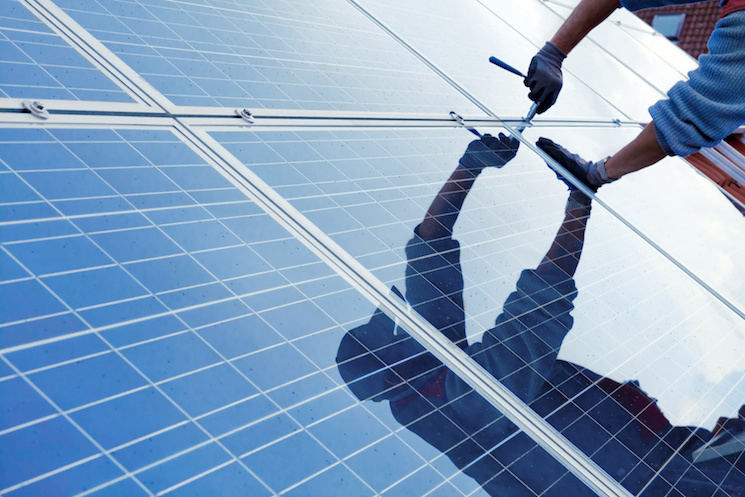By Maureen McIntyre July 5, 2015


Richard Lunt, assistant professor of chemical engineering and materials science at the Michigan State University (MSU) College of Engineering, received a 2015 Innovation of the Year Award in April 2015 from the MSU Innovation Center for the development of transparent photovoltaics (PV). Previous attempts to produce transparent PV resulted in materials that colored or dimmed the light that passed through them. The technology Lunt and his team developed is clear and can be installed on nearly any transparent surface without affecting incoming light.
The transparent luminescent solar concentrator (LSC) is a flexible and inconspicuous means of harvesting solar energy that can be used on buildings, cell phones, car windows, and any other device that has a clear surface. It uses small organic molecules to absorb specific nonvisible wavelengths of sunlight but allow natural visible light to pass through. The solar energy is converted to electricity by thin photovoltaics strips.
Other members of the MSU research team include Yimu Zhao, an MSU doctoral student in chemical engineering and materials science; Benjamin Levine, assistant professor of chemistry; and Garrett Meek, doctoral student in chemistry.

Lunt worked as a postdoctoral associate at the Massachusetts Institute of Technology (MIT) after earning his Ph.D. at Princeton University in 2010. In 2011, he cofounded Ubiquitous Energy Inc. with MIT colleagues to commercialize the technology for a variety of applications.
One benefit of this new technology is its flexibility. Although it’s at an early stage of development, it has the potential to be scaled to commercial or industrial applications affordably. Ubiquitous Energy is working on improving the material’s energy-producing efficiency.
Currently, the prototype produces a solar conversion efficiency close to 1%, and the best colored LSC has an efficiency of around 7%. According to the Ubiquitous Energy website, two-thirds of the light available for energy harvesting is in the ultraviolet and the infrared, which should make practical efficiencies of more than 10% possible while maintaining up to 90% visible transparency.
To bring its ClearView PowerTM technology to market, Ubiquitous Energy has established prototyping and pilot production capabilities in Silicon Valley. Non-toxic, readily available materials are deposited using industry-standard vacuum deposition techniques and the low-temperature deposition process can be used on rigid or flexible substrates. Ubiquitous Energy is currently working with commercial partners to develop engineering and product prototypes for its first applications in mobile and distributed electronics.
For more information, go to bit.ly/1QLVHVX or http://ubiquitous.energy. For technical details, see bit.ly/1LvIY2W.
Maureen McIntyre is the editor and publisher of SOLAR TODAY.



